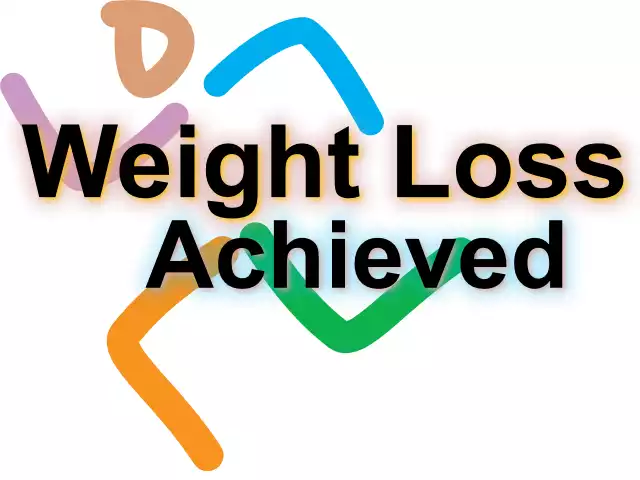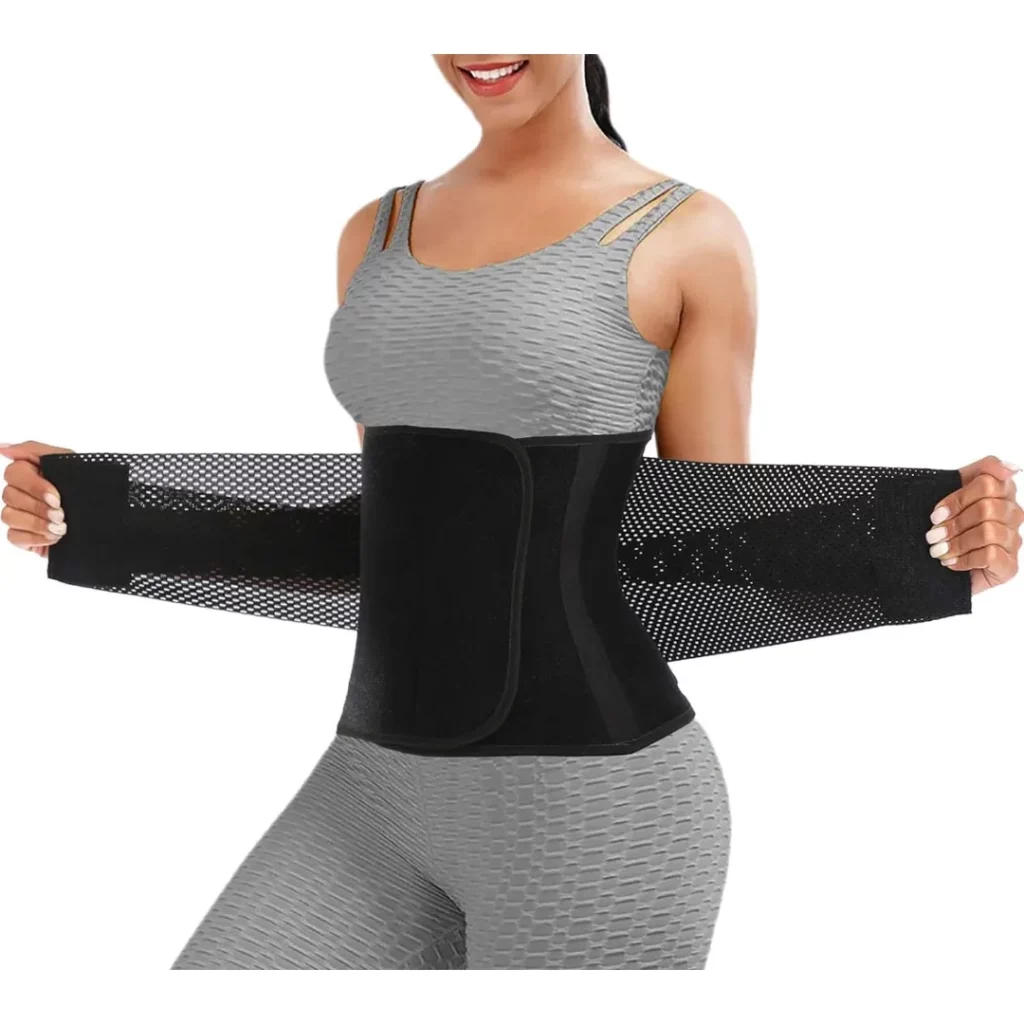In today’s society, the pursuit of a slim and toned physique has become a constant goal for many individuals.
With the rise of social media and the emphasis on physical appearance, the pressure to achieve the perfect body has only intensified.
As a result, the weight loss industry has boomed, offering an endless array of products and solutions promising quick and effortless results.
One such product that has gained popularity in recent years is the weight loss belt.
These seemingly simple and unassuming tools have sparked a frenzy, with claims of helping individuals shed pounds and inches off their waistlines.
But where did these belts originate, and how have they evolved into the trendy flab-fighting accessory they are today? In this article, we will take a closer look at the evolution of weight loss belts, from their humble beginnings to their current fashionable status, and explore their effectiveness in the battle against the bulge.
Table of Contents for The Evolution of Weight Loss Belts Flab-Fighter
The history of weight loss belts
Weight loss belts have a long and intriguing history that dates back several decades.
These belts, also known as waist trimmers or sauna belts, were initially introduced as a revolutionary technique to help individuals shed excess pounds effortlessly.
Although the concept of using belts for weight loss can be traced back to ancient times, it was during the 1980s and 1990s that these devices gained significant popularity.
During this period, weight loss belts were heavily marketed as a quick and easy solution to achieve a slim and toned waistline.
However, as scientific research and understanding of weight loss progressed, the effectiveness and safety of these belts came under scrutiny.
Critics argue that weight loss belts primarily promote temporary water loss rather than actual fat reduction.
Consequently, their popularity has waned in recent years, making way for more evidence-based weight loss approaches.
Nevertheless, weight loss belts remain a part of fitness and wellness culture, albeit now with a more informed understanding of their limitations and potential benefits when used in conjunction with a healthy lifestyle.
Technology advancements in weight loss belts
In recent years, technology advancements have made their way into the realm of weight loss belts, bringing new possibilities and potential benefits.
One notable advancement is the integration of smart technology into these belts, providing users with real-time feedback and data on their weight loss progress.
These smart belts often come equipped with sensors that can track metrics such as heart rate, body temperature, and even calories burned during physical activity.
Additionally, some advanced weight loss belts are designed to use vibration or electrical stimulation to target specific muscle groups and enhance the effectiveness of workouts.
These technological advancements aim to improve the overall user experience and provide a more personalized approach to weight loss.
However, it is important to note that while these advancements offer potential benefits, they should be used in conjunction with a balanced diet and regular exercise for long-term, sustainable weight loss.
Modern design and features of weight loss belts
The modern design and features of weight loss belts have undergone significant improvements, making them more effective and comfortable for users.
One notable design element is the use of breathable and lightweight materials that allow for maximum comfort during workouts or everyday wear.
Additionally, manufacturers have incorporated adjustable straps and closures to ensure a secure and custom fit for individuals of all shapes and sizes.
Many weight loss belts now feature a sleek and slim profile, allowing them to be discreetly worn under clothing without sacrificing aesthetics.
Furthermore, advancements in manufacturing techniques have allowed for the development of belts that are both durable and easy to clean, making them suitable for regular use.
These modern design and features of weight loss belts not only enhance their functionality but also make them a fashionable accessory for those striving to achieve their fitness goals.
Effectiveness of weight loss belts
Weight loss belts have gained popularity as a potential tool to aid in weight loss efforts.
However, it is important to note that the effectiveness of weight loss belts may vary from person to person.
While some individuals may experience positive results, it is crucial to understand that weight loss belts alone are not a magic solution for shedding excess pounds.
These belts are designed to promote sweating and increase core body temperature, which may lead to temporary water weight loss.
The belt’s compression may also create the illusion of a slimmer waistline.
However, it is essential to incorporate a well-rounded approach to weight loss, including a balanced diet and regular exercise, for sustainable and long-term results.
Additionally, it is advisable to consult with a healthcare professional before incorporating a weight loss belt into your fitness routine to ensure it is safe and appropriate for your individual needs and goals.
Tips for choosing the right weight loss belt for your needs
When selecting a weight loss belt for your needs, there are several factors to consider.
Firstly, it is important to choose a belt that fits comfortably around your waist without causing any discomfort or restriction in movement.
Look for adjustable belts that can be customized to your waist size for a secure fit.
Additionally, consider the material of the belt.
Opt for breathable fabrics that allow for proper ventilation and reduce the likelihood of excessive sweating or skin irritation.
Furthermore, it is advisable to choose a weight loss belt that provides adequate support to your lower back and core muscles.
This can help improve posture and stability during workouts.
Lastly, consider the durability and quality of the belt.
Look for reputable brands and read customer reviews to ensure the belt is made from durable materials that will withstand regular use.
By considering these tips, you can select a weight loss belt that best suits your needs and supports your weight loss journey effectively.
In conclusion, weight loss belts have come a long way since their early days as a simple, rubber corset.
Thanks to advancements in technology and design, these belts now offer a variety of options to help individuals achieve their fitness goals.
From contouring and targeting specific areas to increasing sweat and calorie burn, there is a weight loss belt for every need.
And as more research and development is done, we can only expect to see further improvements and innovation in this area of fitness.
So whether you’re looking to shed a few pounds or tone your midsection, a weight loss belt may just be the fashionable and effective solution you’ve been searching for.
FAQ
How have weight loss belts evolved over time in terms of design and functionality?
Weight loss belts have evolved from basic waist wraps to more advanced designs incorporating materials like neoprene for increased heat retention and targeted compression.
Modern weight loss belts often feature adjustable straps, lumbar support, and even vibration technology to stimulate core muscles and enhance calorie burning.
These belts are now designed to be more comfortable, breathable, and versatile, allowing for use during various physical activities for improved results.
Overall, the evolution of weight loss belts has focused on combining functionality with comfort and convenience to provide users with effective and efficient tools for achieving their fitness goals.
What are the different types of weight loss belts available on the market today, and how do they differ in terms of effectiveness?
There are several types of weight loss belts on the market, including waist trimmer belts, vibration belts, and electronic muscle stimulation belts.
Waist trimmer belts are designed to promote sweating and reduce water weight, while vibration belts claim to stimulate muscles and burn calories.
Electronic muscle stimulation belts deliver electric pulses to muscles to contract them.
In terms of effectiveness, waist trimmer belts may provide temporary water weight loss, vibration belts may improve muscle tone but have limited impact on weight loss, and electronic muscle stimulation belts may help strengthen muscles but are not proven for weight loss.
How do weight loss belts work to help individuals lose weight, and are they a safe and sustainable option for weight loss?
Weight loss belts work by compressing the abdominal area, increasing sweat production, and potentially reducing water weight.
However, they do not promote long-term fat loss and may lead to dehydration and muscle loss.
They are not a safe or sustainable option for weight loss, as they do not address the root causes of weight gain and can have negative health effects.
It is important to focus on a healthy diet, regular exercise, and overall lifestyle changes for sustainable and effective weight loss.
What are some of the potential risks or drawbacks associated with using weight loss belts as a method for losing weight?
Weight loss belts may lead to dehydration, skin irritation, and muscle weakness due to excessive sweating and compression.
They may also create a false sense of achieving weight loss without addressing the root causes like diet and exercise, leading to reliance on shortcuts.
In some cases, wearing these belts for extended periods may cause breathing difficulties or even affect posture and core muscle strength negatively.
It’s crucial to remember that sustainable weight loss involves a holistic approach that includes a balanced diet, regular physical activity, and lifestyle changes rather than relying solely on wearable devices.
How have advancements in technology and materials influenced the development of weight loss belts, and what does the future hold for this type of product in the weight loss industry?
Advancements in technology and materials have allowed weight loss belts to become more comfortable, effective, and versatile.
The use of innovative materials such as neoprene and adjustable straps has improved their durability and usability.
In the future, we can expect weight loss belts to continue evolving with the integration of smart technology for real-time monitoring and personalized feedback.
These advancements will likely enhance the overall effectiveness and user experience of weight loss belts, making them a more prominent and sought-after product in the weight loss industry.







